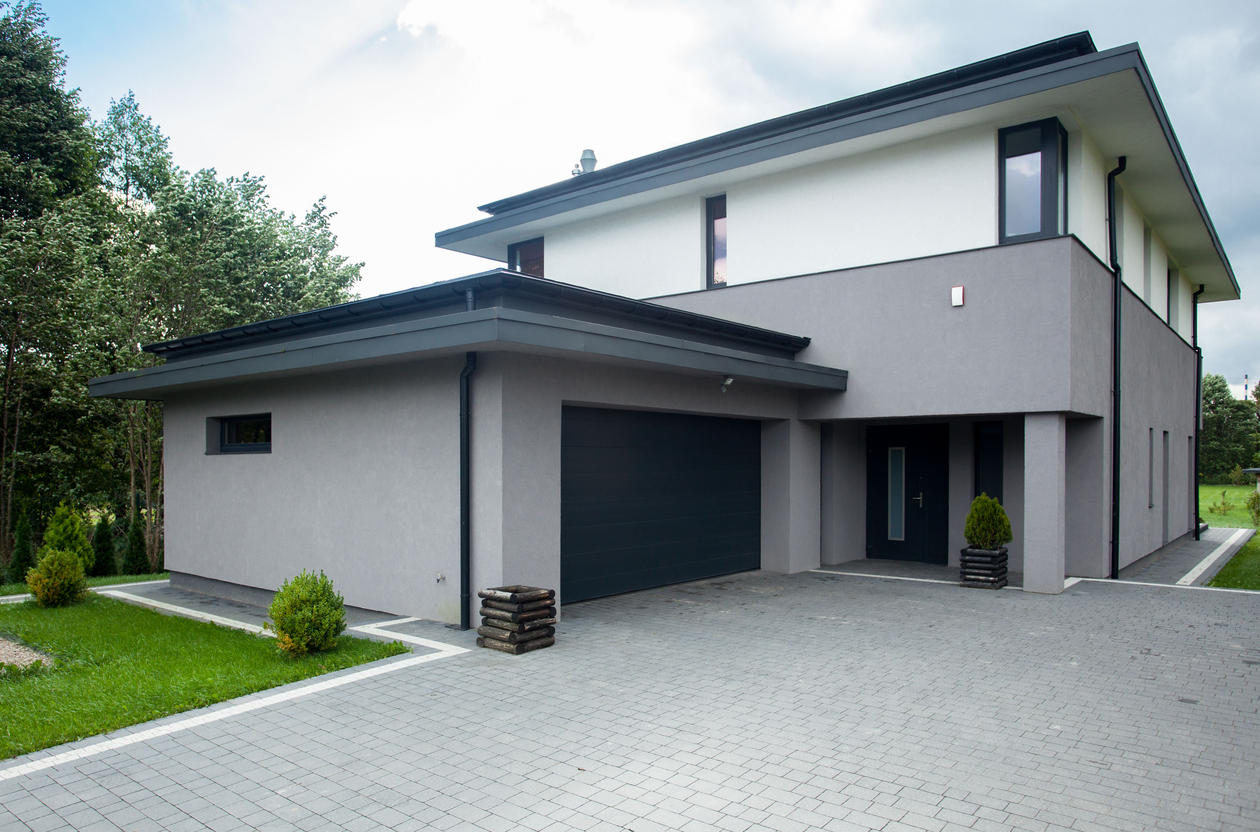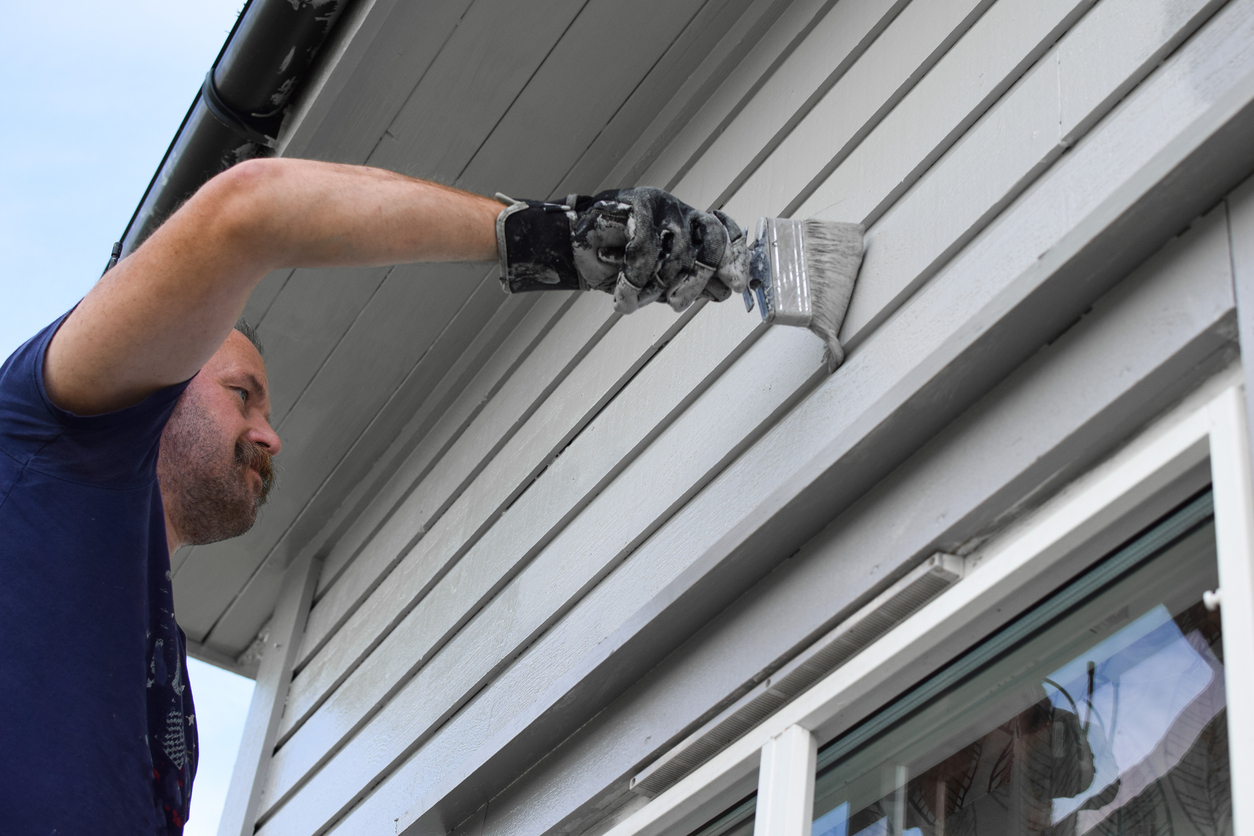Few projects are as impactful as painting the exterior when it comes to enhancing your home’s curb appeal and protecting it from the elements. A well-executed paint job not only boosts the aesthetic appeal of your home but also serves as a crucial barrier against weather, insects, and other environmental factors that can wear down its integrity.
This article will explore essential techniques and tips for painting your home’s exterior, ensuring a durable and attractive finish. From selecting the right paint to mastering the application process, we’ll guide you through the steps necessary to achieve a professional-quality outcome that stands the test of time. Whether you’re a seasoned DIYer or a first-time painter, these insights will help you navigate the complexities of exterior painting with confidence.
Assessing Your Home’s Needs
Before you dip your brush into the paint, it’s crucial to thoroughly assess the condition of your home’s exterior. This initial evaluation will not only influence the outcome but also ensure that the paint job lasts longer and looks better.
Evaluating the Condition of Your Home’s Exterior
Start by conducting a detailed inspection of your home’s exterior. Look for signs of damage such as peeling paint, cracks in the siding, wood rot, mold, and mildew buildup. These issues need to be addressed before painting:
- Peeling Paint: Indicates previous paint failure; requires scraping and sanding to create a smooth surface.
- Cracks and Wood Rot: These can compromise the structural integrity and should be repaired or replaced to prevent further damage.
- Mold and Mildew: These must be cleaned thoroughly to prevent new paint from adhering correctly.
This step is crucial for identifying areas that may need more intensive care or special treatment, such as a primer or a specific type of paint.
Deciding on the Scope of the Project
Determining whether to undertake a full repaint or just touch-ups depends largely on the current condition of your home’s exterior and your long-term maintenance goals:
- Full Repaint: Recommended if there is widespread damage, fading or if you are changing colors.
- Touch-Ups: Suitable for minor blemishes and when the existing paint is still in good condition.
Consider the visual consistency of your home’s appearance and how much time and budget you are willing to invest in this project.
Importance of Timing and Weather Conditions for Painting
Choosing the right time for an exterior painting project is as important as the prep work. Paint adheres best in mild weather and under specific conditions:
- Temperature: Ideal painting conditions are typically between 50°F and 90°F. Extreme temperatures can lead to poor paint adhesion and uneven drying.
- Weather: Dry weather is crucial, both for the application days and for a few days afterward, to allow the paint to cure properly. Avoid painting in rainy or very humid conditions.
Planning your painting project around these factors will help ensure that the paint application goes smoothly and that the finish lasts longer. This strategic approach will not only enhance the beauty of your home but also protect your investment in the long term.
Choosing the Right Paint and Tools
Selecting the appropriate paint and tools is a critical step in the exterior painting process. The right choices can enhance the efficiency of your painting project and ensure a beautiful, lasting finish. Here’s a guide to help you navigate the options available.
Types of Exterior Paints and Their Benefits
Exterior paints are primarily categorized into two types: latex-based and oil-based. Each has distinct characteristics suited for different needs:
- Latex-Based Paints: Known for their ease of use, latex paints dry quickly, have less odor, and are more environmentally friendly. They are flexible, which allows them to expand and contract with the siding, making them less likely to crack. They also resist fading and are easier to clean with soap and water.
- Oil-Based Paints: These paints are prized for their durability and superior adhesion, making them excellent for high-impact areas or surfaces that are prone to wear. They take longer to dry, which can lead to a smoother finish as the paint has more time to level out.
For harsh weather conditions, consider special weather-resistant formulations designed to withstand extreme temperatures, UV rays, and moisture, providing an extra layer of protection.
Tools and Equipment Needed for Exterior Painting
Having the right tools can significantly impact the application process and final look of your paint job:
- Brushes: A good-quality brush is essential for areas requiring precision, such as trim and edges. Brushes come in various sizes and bristles types; synthetic bristles are typically used for latex paint, while natural bristles are better for oil-based paint.
- Rollers: These are ideal for covering large, flat surfaces quickly. Use rollers with an appropriate nap length; thicker naps are used for textured surfaces, whereas shorter naps are better for smooth surfaces.
- Sprayers: Provide the fastest way to paint large and uneven areas. They offer a uniform coat but require more preparation to protect from overspray.
Tips on Selecting Colors
Choosing the right color for your home’s exterior is as much about aesthetics as it is about durability:
- Light vs. Dark Colors: Light colors tend to last longer and reflect more sunlight, reducing damage from UV rays. While rich in tone, dark colors can fade more quickly and absorb more heat, which might affect the siding material.
- Harmonize with Surroundings: Consider the colors of your home’s roofing, stonework, and natural surroundings. This ensures the new paint complements other elements and blends with the environment.
- Test Samples: Before finalizing your color choice, purchase sample sizes to paint small sections of your home’s exterior. This allows you to see the color in different lighting conditions and ensure it matches your expectations.
Choosing the right paints and tools and selecting the perfect color are foundational steps that set the stage for a successful exterior painting project. This careful preparation ensures that the finish not only looks great but also withstands the test of time and elements.
Preparing the Surface
Proper surface preparation is crucial to achieving a durable and visually appealing exterior paint job. A well-prepared surface ensures optimal paint adhesion and can significantly extend the life of your paintwork. Here are the steps you should follow, along with important safety tips for working outdoors.
Detailed Steps for Preparing the Exterior
- Cleaning: Begin by washing the exterior of your home to remove dirt, dust, and grime. Use a pressure washer for the best results, but be careful to use an appropriate setting to avoid damaging the siding. For areas with mold or mildew, use a solution of bleach and water or a commercially available cleaner designed for mold removal.
- Scraping: Once the surface is dry, use a paint scraper to remove any old, peeling, or flaking paint. This process is vital for creating a smooth base to which new paint can adhere.
- Sanding: Sanding smooths out the scraped areas and feathers the edges where old paint still adheres. For wooden surfaces, use medium-grit sandpaper and ensure evenness to avoid visible bumps or dips in the final paint job.
- Priming: Apply a quality primer to all bare and sanded areas. Primer is essential for sealing the surface and providing a uniform base that enhances paint adhesion. It’s especially important on wood and metal surfaces or where there are significant color changes.
Importance of Thorough Preparation for a Lasting Finish
Thorough preparation is the foundation of a lasting paint job. It prevents common problems like peeling and cracking and ensures the paint layer sits uniformly on the surface. The extra effort spent on meticulous preparation directly correlates with the longevity and quality of the finish, protecting your home and maintaining its aesthetic appeal for years to come.
Safety Tips for Working Outdoors and on Ladders
Safety is paramount when preparing and painting the exterior of a home, especially when using ladders and working at heights:
- Check Equipment: Before use, ensure that all equipment, especially ladders and scaffolds, are sturdy and in good condition.
- Use Proper Ladder Techniques: Always place ladders on a stable, level surface. Avoid overreaching or leaning too far to one side; keep your waist between the ladder rails at all times. Use a ladder with a height that is appropriate for the task to prevent stretching.
- Wear Protective Gear: Always wear safety goggles, gloves, and appropriate clothing to protect against splinters, chemicals, and other irritants. Consider a respirator or mask when sanding or if you are using chemical strippers.
- Stay Hydrated and Take Breaks: Exterior preparations, especially in hot weather, can be physically demanding. Drink plenty of water, use sunscreen, and take regular breaks to avoid fatigue and heat-related illnesses.
Following these detailed steps and safety tips will help ensure that your home’s exterior is optimally prepared for painting, contributing to a high-quality finish that will look great and withstand the elements.
Painting Techniques for a Professional Finish
Achieving a professional-quality finish when painting your home’s exterior involves more than just applying paint. It requires careful technique and attention to detail. Here’s a step-by-step guide on how to apply paint effectively, along with tips for handling tricky areas and avoiding common mistakes.
Step-by-Step Guide on How to Apply Paint
- Brushing: Start with a high-quality brush to apply paint to smaller, detailed areas such as trim and edges. Load the brush with enough paint to cover a reasonable area without overloading. Apply the paint using controlled, smooth strokes to avoid drips.
- Rolling: Use a roller for larger flat surfaces. Dip the roller into the paint tray and roll it back and forth to evenly distribute the paint on the roller cover. Apply the paint in a ‘W’ or ‘M’ pattern without lifting the roller, filling in the pattern to ensure even coverage. This technique helps distribute the paint uniformly and minimizes streaks.
- Spraying: Using a sprayer can be efficient for very large or textured surfaces. Practice on a piece of cardboard to get a feel for the sprayer’s pattern and pressure. Keep the sprayer at a consistent distance from the surface and use even, overlapping strokes. Overlap each pass by about a third to ensure complete coverage without gaps.
Techniques for Achieving Even Coverage and Avoiding Common Mistakes
- Maintain a Wet Edge: Always try to keep a “wet edge” by overlapping areas of fresh paint without letting the edges dry. This technique helps prevent streaks and lines.
- Correct Thickness: Apply paint at the correct thickness. Too thick can lead to runs and sags, while too thin may result in an uneven coat. For guidance on application thickness, refer to the paint manufacturer’s recommendations.
- Avoiding Drips and Streaks: When using a brush or roller, periodically check the freshly applied paint for drips or excess paint accumulation, especially near edges and corners. Smooth these out immediately.
- Consistent Pressure: When rolling or spraying, use consistent pressure to avoid uneven layers of paint that can lead to visible lines or poor coverage.
Handling Tricky Areas Like Window Frames, Doors, and Trim
- Window Frames and Doors: Tape off glass with painter’s tape and use a smaller brush for edges and corners. For panel doors, paint the recessed panels first, then the horizontal rails, and finally the vertical stiles.
- Trim: When painting the trim, use a brush for better control. Consider using a smaller angle brush for precision if the trim has small, detailed work. Paint trim in long, even strokes to achieve a smooth finish.
- Overlap and Detailing: To ensure a sealed edge, ensure that the paint overlaps slightly onto the adjoining surface (like window panes or door edges). If necessary, this overlap can be neatly cleaned up with a razor blade once the paint dries.
By following these steps and techniques, you can achieve a smooth, professional finish on your home’s exterior, ensuring both beauty and durability. Taking the time to execute each step correctly will result in a paint job that not only looks great but also effectively withstands the environment.
Ensuring Longevity
A long-lasting exterior paint job requires more than careful application; it also depends on taking proactive steps to protect and maintain the painted surfaces. Here are some tips on protective measures and advice on maintenance and recognizing signs of wear.
Tips for Protective Measures
- Use of Sealants and Top Coats: To enhance the durability of your paint job, consider applying a sealant or top coat over the final layer of paint. This is especially beneficial in harsh weather areas, as it provides additional protection against UV rays, moisture, and dirt. Sealants are recommended for wood surfaces to prevent moisture absorption and metal surfaces to prevent rust.
- Quality of Paint: Invest in high-quality paint with built-in UV protection and mold resistance. These paints are more resilient and maintain their color and integrity longer than standard paints.
Maintenance Advice to Extend the Life of Your Paint Job
- Regular Cleaning: Gently clean the painted surfaces at least once a year to remove dirt, grime, and pollutants that can degrade the paint. Use a soft brush, a low-pressure hose, and a mild detergent solution to avoid damaging the paint surface.
- Immediate Repairs: Address any damage, such as chips or cracks, immediately to prevent moisture infiltration, which can lead to further deterioration of the paint and the underlying material.
- Trim Vegetation: Remote bushes, vines, and trees from the house. Vegetation can scratch paint surfaces and trap moisture against the house, leading to paint deterioration.
Signs of Wear to Watch for and When to Consider a New Coat
- Fading and Discoloration: Paint that looks faded or has significantly changed color usually indicates degradation from UV exposure. South and west-facing walls are typically most susceptible and might require more frequent repainting.
- Chalking: If you notice a powdery residue on the paint surface when you run your hand across it, this is a sign of chalking, which happens when the paint binder degrades, exposing the pigment.
- Peeling and Cracking: These are signs that the paint is no longer adhering properly, possibly due to poor surface preparation, moisture issues, or the age of the paint. Peeling and cracking often necessitate a complete repaint rather than just touch-ups.
- Mold and Mildew: Any mold or mildew growth should be addressed not only because it can degrade the paint but also for health reasons. Cleaning areas affected by mold and mildew and repainting them with mold-resistant paint can help mitigate this issue.
Watching for these signs and addressing them promptly can significantly extend the life of your paint job. Regular maintenance keeps your home looking fresh and protects your investment in the long term. By taking these protective and proactive measures, you can ensure that your home’s exterior remains vibrant and well-protected for years to come.
Conclusion
A beautiful and durable exterior paint job not only enhances your home’s curb appeal but also provides essential protection against environmental elements. By following best practices for preparation, application, and maintenance, you can ensure your home looks great and stands up to the test of time. Should you need professional assistance or have further inquiries about painting your home’s exterior, don’t hesitate to contact Custom Painting, Inc. at 925-686-0903 or fill out our contact form for personalized service and expert advice.




